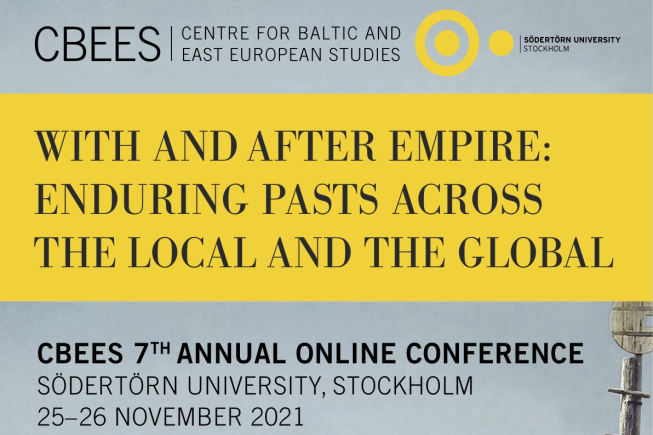Maria Dolgova took part in the conference "With and After Empire: Enduring Pasts Across the Local and the Global"
The annual conference ofô CBEES (Centre for Baltic and East European Studies, SûÑdertûÑrn University, Sweden, Stockholm)ô "With and After Empire: Enduring Pasts Across the Local and the Global" was held on November 25-26. Laboratory's research assistant Maria Dolgova took part in the conference and had a presentation "The Origin of Ladies-in-Waiting of the Russian Imperial Court During the Reign of Nicholas I (1825-1855)".

In the second quarter of the 19thô century emperor Nicholas I regulated and systematized all areas of life, including the imperial court. Nicholas I created the Ministry of the Imperial Court in the 1826. The emperor was building a "national scenario of power" (R. Wortman term). That manifested itself in the creation of the doctrine of official nationality, where the main components were autocracy, orthodoxy and nationality. In the visual part of the presentation of the "national scenario" Nicholas I sought to preserve or recreate the Russian traditions in music, architecture, clothing. The clothing was also reflected in the space of the imperial court. In 1834 a decree was issued "The Description of ladies' gowns for formal occasions at the Imperial Court", where the "Russian dress" was introduced as a dress uniform for the ladies-in-waiting at special important formal events. Among the obligatory ceremonies at the imperial court there were also "big" (on holidays) and "small" (on weekends) processions to church services in the Winter Palace, which alludes to the second component of the "power scenario" of emperor Nicholas - Orthodoxy.
But who wore this ãRussian dressã and attended church services? Were only Orthodox members of the Russian nobility? Using the example of the institution of the ladies-in-waiting, it was examined who were these women who embodied "Russianness" at the court of Emperor Nicholas I.
